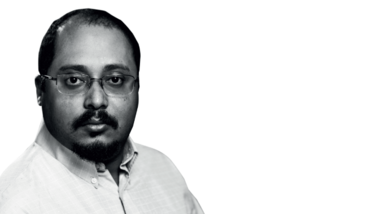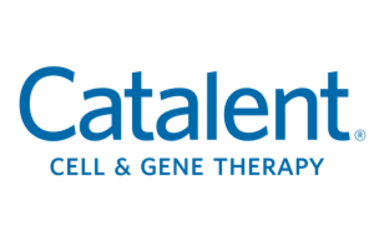Purifying Gene Therapy
The gene therapy industry must maximize the amount of therapeutic gene payload being delivered with each vector to reduce the risk of immune reaction and, ultimately, cut costs. How? High-level purification.
Akash Bhattacharya | | Opinion

Most would agree that gene therapy holds enormous potential for treating, preventing, and even eradicating disease – and we are starting to see real results. The first gene therapy product was approved in the US by the FDA in 2017 but, since then, approvals have come rapidly. To date, there are nine approved therapies in the US, including treatments for several cancers, spinal muscular atrophy in young children, an inherited form of blindness, and certain genetic disorders in which the body is unable to make a protein or enzyme.
Creating safe products that can be scaled up – and retain their safety – is key. The important element in manufacturing gene therapy products is purity, which refers to the efficiency of “packaging” for delivery into the cell. Poor packaging can lead to less effective therapy. And giving higher doses of therapy to offset poor packaging risks triggering an allergic reaction in the patient. The FDA has issued guidance for clinical trials that addresses the importance of this very issue (1).
As a quick recap, gene therapy typically involves inserting genetic material into cells via a harmless viral vector that “infects” the cell and delivers the genetic payload. One of the most popular vectors for packaging is the adeno-associated virus (AAV), which has two key benefits: efficiency as a gene delivery vector and low pathogenicity. The virus has been modified from the wild type to optimize its efficiency as a therapeutic gene carrier and minimize its potential to cause disease. Recombinant AAV is the leading platform for gene therapy today.
Although the AAV itself is harmless, it is a foreign substance, so it can trigger an immune reaction in the patient. Packaging efficiency greatly affects this consideration, especially if a larger dose of the payload gene is injected in hopes of a greater therapeutic effect. For instance, if the packaging efficiencyof the packaging is very poor, eight out of 10 viral packages might be empty or only partially loaded. Logically, then, to deliver the desired dose of the payload gene, you might have to dose the patient with a proportionately higher amount of total vector. This process may trigger an elevated allergic response, so gets no marks for safety (in fact, just the opposite).
To minimize risk, the obvious solution is to maximize the amount of therapeutic gene payload delivered with each vector – in other words, high-level purification. The strategies employed have been the subject of my own research over the years. Two related methods are ultracentrifugation and analytical ultracentrifugation (AUC), which can, respectively, purify and characterize a gene therapy product.
Ultracentrifugation has been around for decades, but has advanced rapidly in recent years. The machine itself is a fraction of its previous size, with many more capabilities: spinning at 100,000 rpm or greater and delivering 100,000 g. The ultracentrifuge can separate compounds of similar size, but different densities, based on a density gradient – which means it does an excellent job of isolating filled AAV vehicles from partially filled or empty vehicles. The ultracentrifuge is a method for arriving at a product of high homogeneity and purity.

Formulation and Characterization Strategies for Gene Therapies
Gene therapy product formulation studies are currently limited in scope. Hear our expert discuss how we're working towards establishing formulation selection criteria using traditional techniques and evaluating novel methodologies.
Once you’ve isolated your product, a quality check is in order. Analytical ultracentrifugation (AUC) can be used for this purpose, because it is very good at characterizing the purified product. In short, a very small amount of the sample is run on the AUC, which employs sophisticated detectors and highly complex mathematics to determine the percentage of filled vehicles. Combining ultracentrifugation with AUC to achieve – and evaluate – a good drug product could minimize patient risk.
Gene therapy technologies are fast advancing and close interdisciplinary collaboration makes it all possible. Our virology colleagues, for instance, are working on ways to modify and scale up triple transfection, the elegant process by which the AAV itself is made. The classic method uses human embryonic kidney cells, known as HEK-293. But a newer strategy employs an insect cell line system, Sf9 , which holds a great deal of promise.
On our end, we will continue to streamline the instruments and workflow until the entire experiment and analytic process conform to current good manufacturing practices. We also hope to further reduce time and costs with the ability to analyze “dirtier” samples closer to the bioreactor and before multiple rounds of purification. Another goal is to make some of the elements fully disposable, which is important from a biohazard perspective.
Gene therapy is a powerful step in the direction of eradicating a disease – something that has only happened a few times in history. Eliminating diseases that affect a large percentage of the population or are particularly devastating – such as macular degeneration or neurodegeneration – would be an enormous advance, but one I believe will someday be achievable through simplifying workflows and increasing purity and safety. These steps will ultimately allow us to distribute gene therapy safely and affordably to much greater numbers of people.
- FDA, “Considerations for the design of early-phase clinical trials of cellular and gene therapy products” (2015). Available at: https://bit.ly/2LwLfq9.
Senior Application Scientist at Beckman Coulter Life Sciences



















